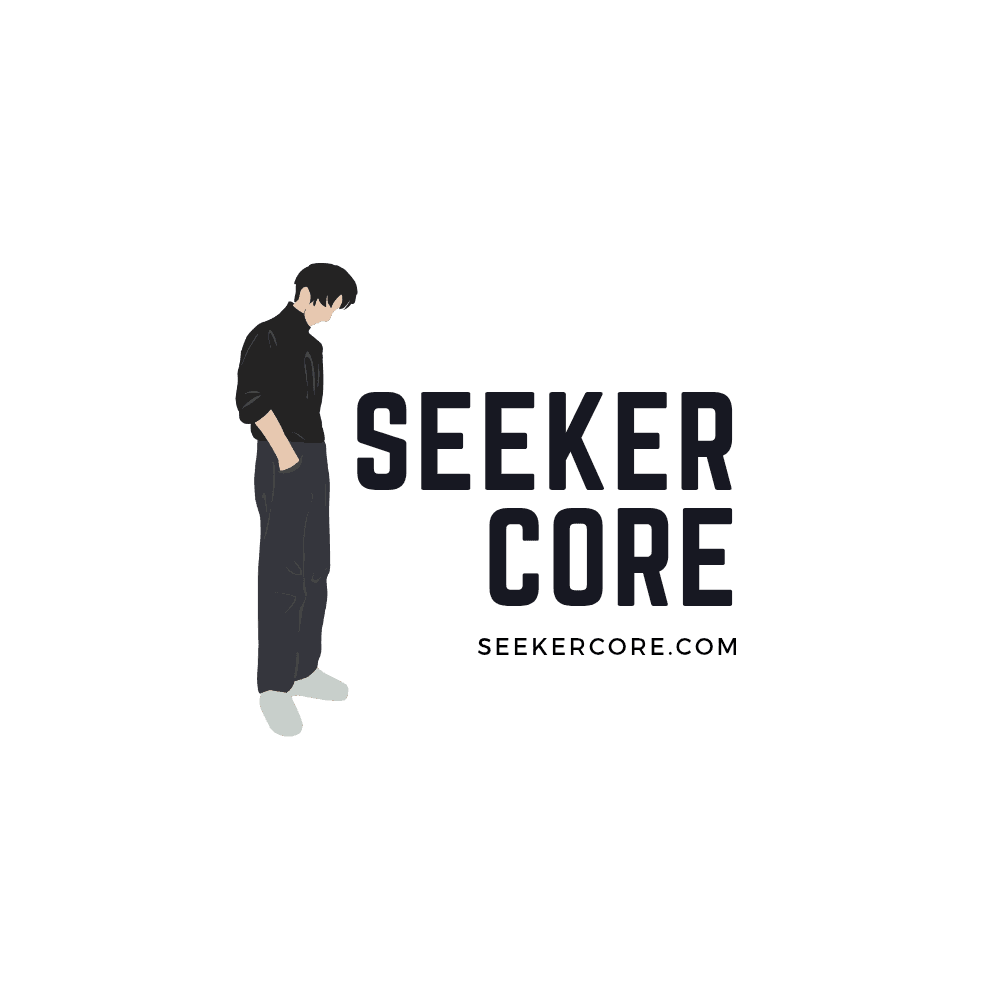How to Practice Stoicism: Choose Your Pain, Build Inner Strength
Learn how to practice Stoicism in everyday life with powerful tools like journaling, negative visualization, and voluntary discomfort. Discover how choosing your pain can lead to lasting peace, purpose, and inner strength.
“If you do not choose the hard path voluntarily, life will eventually force it upon you.”
— Jordan B. Peterson

The Experiment That Broke Me
It was 3AM.
I was lying in bed, endlessly scrolling—feeling numb and hollow.
I had dreams, but no energy. I craved change, yet kept running from discomfort.
So I did an experiment. I wanted to see if a life of pure comfort could actually make me happy.
For a few days, I gave in completely—playing games, binge-watching anime, scrolling Instagram for hours.
At first, it felt good. But as the days passed, something unexpected happened.
Even though I was constantly “busy,” every night ended the same—with a sinking emptiness I couldn’t ignore. I was doing everything that’s supposed to make us feel good, yet I felt worse with each passing day.
And that’s when it hit me:
Comfort wasn’t making me happy—it was quietly killing my potential.
I was already in pain—but it was meaningless pain.
So I asked myself:
What if I suffered for something meaningful instead?
Because without progress, without purpose… time becomes a burden.
That’s when I realized I needed to learn how to practice Stoicism—not as a theory, but as a way of building inner strength from within.
What if I chose a different kind of pain?
What if I chose the pain that leads to growth?
What if I… chose my pain?
The Stoic Paradox: You Can Choose Your Pain
Stoics never said “avoid pain.”
They said: “Use it.”
“It’s not what happens to you, but how you react to it that matters.”
— Epictetus
Modern psychology backs this.
Cognitive Behavioral Therapy (CBT)—inspired by Stoicism—shows how our thoughts shape emotional pain. When we catastrophize (“This will ruin me”) or personalize (“I’m a failure”), we suffer more than we need to.
Stoicism reframes this:
If pain is inevitable, why not choose the pain that strengthens you?

Two Kinds of Pain
- Chosen Pain
Pain you face on purpose for growth:
Waking up early
Saying no to distractions
Facing uncomfortable truths
Pushing your limits
It hurts, yes. But it builds you. - Unchosen Pain
The pain of avoidance:
Regret from missed chances
Anxiety from lack of discipline
Weakness from neglecting your mind
Shame from lying to yourself
This pain sneaks up on you… and hits harder.
Stoic Tools That Build Unshakable Inner Strength
Here’s what helped me move from pointless pain to purposeful growth:
- Voluntary Discomfort
If you’re wondering how to practice Stoicism in real life, start by embracing small moments of discomfort—on purpose:
Cold showers
Fasting for a few hours
Saying “no” when it’s easier to say “yes”
“If you are tough on yourself, life will be infinitely easier on you.”
— Zig Ziglar
Seneca used to sleep on the floor and eat plain food to train for hardship.
Why?
Because when real suffering comes, you’re ready.
- Premeditatio Malorum (Negative Visualization)
Visualize challenges before they happen.
It sounds dark—but it drains fear of its power.
Practice:
Imagine worst-case scenarios: failure, rejection, loss.
Ask yourself: “Could I survive this? How?”
By doing this, you train your mind to face discomfort calmly—not with panic.
And if the worst does happen in real life?
You’re not caught off guard. You’re prepared.
- Journaling
Reflection turns chaos into clarity.
Your mind is loud—writing helps you listen.
Try writing about:
What you’re avoiding
Where you failed today
What triggered you emotionally
What you’re genuinely grateful for
It’s not about sounding wise—it’s about getting honest.
“The soul becomes dyed with the color of its thoughts.”
— Marcus Aurelius
His personal reflections became Meditations—a Stoic classic not meant for the world, but for
himself.
Just like that, your journal can become a mirror—revealing your patterns, blind spots, and deeper truths.

- Amor Fati — Love Your Fate
Use everything—good or bad—as fuel:
Missed the bus? Practice patience.
Failed an exam? Grow humility.
Lost something? Learn detachment.
The Stoics didn’t just tolerate fate—they embraced it.
Every setback was training. Every pain, a lesson.
What happens, happens for you.
- Memento Mori — Remember Death
A daily reminder: You won’t live forever. So live on purpose.
Ask yourself daily:
“If I died tomorrow, would I be proud of today?”
“Don’t pray for an easy life. Pray for the strength to endure a difficult one.”
— Bruce Lee
Death isn’t meant to depress you—it’s meant to wake you up.
Because when you remember how little time you have, you stop wasting it.
- The Dichotomy of Control
One simple filter changes everything:
“Is this in my control?”
What is in your control?
Your actions
Your effort
Your response
What’s not?
Other people’s opinions
The past
Random outcomes
Focus only on your circle of control—drop the rest.
Freedom begins the moment you stop trying to control the uncontrollable.

- Delayed Gratification — Discipline Over Desire
The Stoics knew: not every craving is worth obeying.
Modern science agrees—those who can wait, win.
Resisting short-term pleasure builds long-term strength.
Skip the junk now to build a mind that doesn’t crave escape.
Ask yourself:
“Will this still matter tomorrow? Next week? Next year?”
Every time you say no to a cheap hit of dopamine,
you say yes to something deeper: purpose, clarity, progress.
“Freedom is the power to choose your chains.”
— Self-discipline is painful, but so is regret. Choose wisely.
Saying No Builds Mental Toughness.
Each time you resist scrolling, junk food, or gossip—you grow stronger.
Discipline is like a muscle: use it daily, and watch it grow.
Try this:
The 24-Hour Rule: “Will this matter in 24 hours? 24 months?”
Micro-No’s:
No snooze button once a week
No phone in bed
No complaints today
“Every ‘no’ to distraction is a ‘yes’ to your future self.”
Even Your Career Comes With Pain
All careers involve stress, setbacks, boredom.
So the question is:
What kind of pain are you willing to suffer for?
If you’ll struggle anyway, why not struggle for something meaningful?
A nurse faces burnout—but finds meaning in healing others.
A startup founder risks failure—but values autonomy.
“Choose a job you love, and you will never work a day in your life.”
— Confucius (Sort of.)

7 Days of Stoic Experiments
A challenge for you:
Day 1: Practice negative visualization before a stressful event.
Day 2: Take a cold shower.
Day 3: Journal: “What story am I telling myself?”
Day 4: Delete one complaint from your vocabulary.
Day 5: Write a letter from your 80-year-old self.
Day 6: Forgive someone (even if they don’t deserve it).
Day 7: Reflect: “What pain did I choose this week?”
Stoic Fails (Because We’re Human Too)
You wake up late, miss a deadline, and start blaming everything—your alarm, the weather, even the internet.
But later, in a quiet moment, the real lesson hits:
“I was reacting to what I couldn’t control—instead of fixing what I could.”
Next time? Focus on what’s within your power.
Stoicism isn’t about being perfect.
It’s about choosing progress—even after we stumble
Quotes to Reflect On
“Suffering with purpose builds character.” — Viktor Frankl
“Hard choices, easy life. Easy choices, hard life.” — Jerzy Gregorek
“Everything you’ve ever wanted is on the other side of fear.” — George Addair
“You have power over your mind—not outside events.” — Marcus Aurelius
“The only way to do great work is to love what you do.” — Steve Jobs

TL;DR – Stoic Cheat Sheet
- Reframe suffering: Is this chosen or unchosen pain?
- Practice voluntary discomfort.
- Control what you can. Let go of the rest.
- Journaling = emotional clarity.
- Choose career pain that aligns with your purpose.
- Delayed gratification builds mental toughness—discipline now, rewards later.
- Every “no” to distraction is a “yes” to your future self.
If you truly want to grow, learn how to practice Stoicism not just when life is hard—but daily, through small choices that build inner strength.
Final Message
“What pain are you avoiding right now… that might actually set you free?”
Choose one small discomfort today.
Then notice how alive you feel when you stop running.
P.S. If this post sparked something in you, share it with someone who’s struggling. You never
know who needs this today.
Want to go deeper into Stoicism? Check out The Daily Stoic.
Want to build self-awareness?
Check out my in-depth post on it here: Why Most People Stay Stuck

One Comment